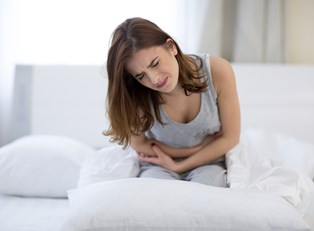Endometriosis is a chronic and painful disease that affects millions of women across the world. In healthy women, endometrial tissue develops in the uterus and is shed monthly during menstruation. However, in women with endometriosis, this tissue occurs in areas outside of the organ—such as the abdomen, the ovaries, fallopian tubes, or uterine ligaments. However, in some cases, this tissue may also occur in the pelvic cavity lining, the bladder, the cervix, the vagina, or vulva as well.
The endometrial cells found in these parts of the body cannot be shed normally and can lead to symptoms such as inflammation, internal bleeding and pain.
The Symptoms of Endometriosis
Pain and infertility are the main symptoms of endometriosis. Most commonly they occur in the form of extremely painful or debilitating menstrual cramps. However, other symptoms can occur, including heavy periods, bleeding or spotting between periods, painful bowel movements, or a burning sensation when urinating. Less common symptoms include painful sex, cramping in the small intestine or lower abdomen, and fatigue.
Some women may find that the symptoms of endometriosis become milder after menopause, but this does not always happen—especially when women undergo hormone therapy to alleviate menopause symptoms.
Understanding Endometrial Pain
Even though pain is one of the main symptoms of the condition, medical researchers do not yet understand what its exact causes are. Strangely enough, the level of pain does not seem to correspond with the severity of the disease. For example, some women with large growths of endometrial tissue may experience very little pain, while some women with only small growths experience severe pain. However, there are several potential causes, including:
- Endometrial tissue that remains in the body cause irritation to the areas surrounding it
- Endometrial cells contain nerves, which are more sensitive to pain-causing chemicals
- Endometrial tissue turns into cysts, which can cause pain when they develop on the ovaries or in the pelvic area
- Scar tissue that develops due to endometrial inflammation
- Hormones and chemicals released endometrial cells irritates nearby organs



